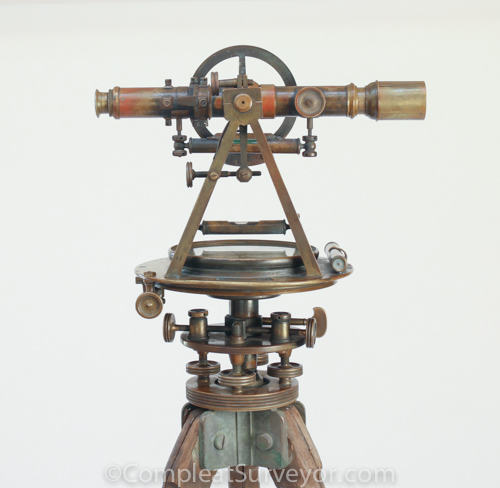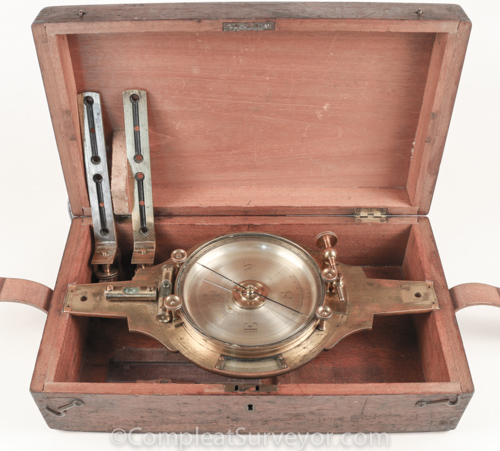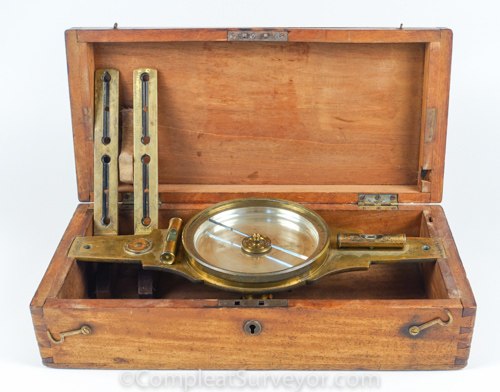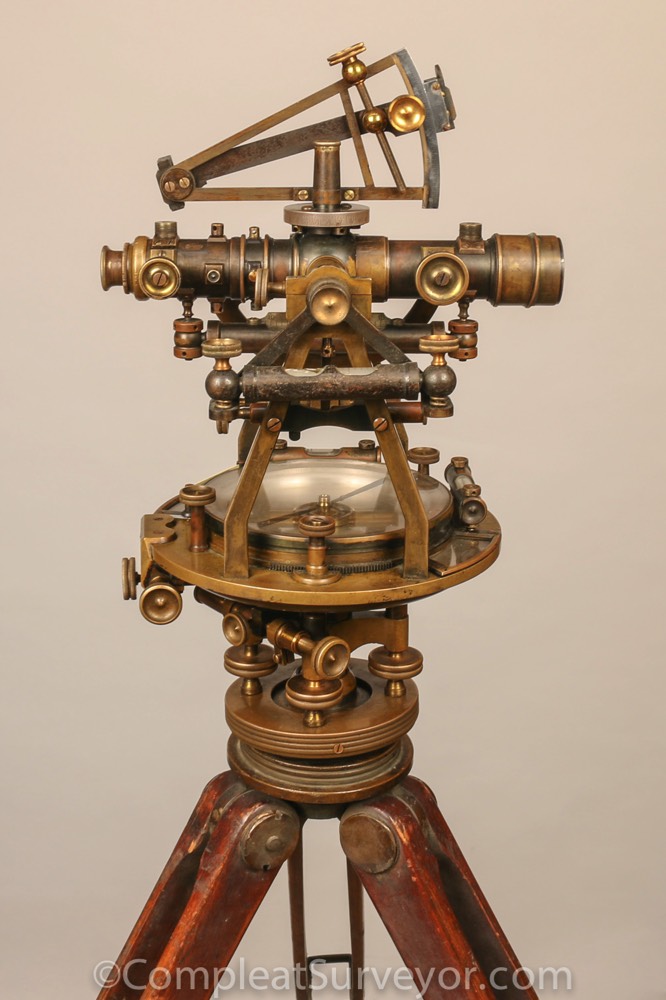
W. & L. E. Gurley
History
W. & L. E. Gurley
Troy, New York
William Gurley (1821–1887) graduated as a civil engineer from Rensselaer Polytechnic Institute. After going as far west as Michigan seeking employment as an engineer and finding none, he returned to Troy and went to work for five years as a foreman for Oscar Hanks, a surveying instrument maker. In 1845, William formed a partnership with Jonas Phelps under the firm name of Phelps & Gurley. , worked for Oscar Hanks, a surveying instrument maker in Troy, New York, and then went into partnership with Jonas H. Phelps, another local instrument maker. Lewis Ephraim Gurley (1826–1897) worked for Phelps & Gurley, earned a B.A. from Union College in Schenectady and graduated with a Bachelor of Arts degree. He then rejoined the firm and in 1852 the Gurley brothers purchased Jonas Phelps' interest in the business and the firm became known as W. & L. E. Gurley.
W. & L. E. Gurley was soon the largest manufacturer of engineering and surveying instruments in the United States. Several factors contributed to their success. Both men, having earned degrees in civil engineering, appreciated the practical applications of technology, and aimed to set their company at the cutting edge of instrument technology. The Gurleys pioneered in mass marketing as well as mass production of instruments.They established a factory rather than a craft workshop, practiced a strict division of labor, hired workers who were relatively unskilled, advertised widely, and offered instruments at competitive prices. Their Manual of the Principal Instruments Used in American Engineering and Surveying, published from 1855 to 1921, was a catalog of their instruments and an intelligent explanation of how they were to be used.
The design of Gurley instruments remained remarkably stable for many years, making it difficult to determine the date of a particular instrument. But there are some important clues. Since the signatures on the early Gurley instruments were cut by hand, the letters have V-shaped trenches, and their lines are of varying width. By contrast, the signatures on Gurley instruments made after 1876 were done with an engraving machine, and thus have lines with vertical walls and uniform width. The finish on Gurley instruments is not a good dating characteristic, but may serve as a guide. Since 1855, and probably before, the customer had the option of either a "bright" finish of lacquered brass, or a "bronze" finish, achieved by acid treatment of the polished surfaces before lacquering. Until the mid 1870s, unless otherwise specified, all instruments were furnished "bright." From that time until about 1900 compasses were furnished "bright," and transits, levels, and solar instruments were "bronzed." Aluminum instruments, first offered in 1876 but not ostensibly marketed until about 1895, were always furnished with a "natural" finish. The "morocco" finish was introduced in 1916. In 1886 Gurley made a basic design modification to its transits. The two most obvious changes were the introduction of spring opposed tangent screws, and the replacement of the straight legged "A" form telescope supports with a bent leg design. The Gurleys introduced serial numbers in 1908, with the first digits indicating the year of manufacture, and the latter digits indicating production rate. Thus, transit #9296 was the 296th Gurley instrument made in 1909. W. & L. E. Gurley was incorporated in 1900, with all the stock held by the family. Teledyne purchased the firm in 1968, began trading as Teledyne-Gurley, and phased out the production of surveying instruments soon thereafter.
Although Gurley was neither the inventor nor the earliest producer of solar instruments, when it finally got into the game it became a major player. The completeness of their line, the diversity of their designs, and the sheer numbers made, justify a study of Gurley's solar instruments. The Gurleys introduced three solar instruments in 1858. Burt's solar compass. Gurley's original Solar Compass was similar to Burt's improved solar compass. A second form, in which the tangent screws were moved close to their arcs, was introduced in the 1860s. A third form, with modified declination are, was introduced in 1895. The fourth and final design appeared in 1911, and was discontinued in 1915. This form incorporated redesigned declination and latitude arcs, and the solar apparatus was mounted over a full compass. Gurley's Solar and Rail Road Compass was a transitional piece, introduced in 1858 and retired in the 1860s. This was a conversion of Gurley's standard Rail Road Compass in which the brass ring, glass cover, magnetic needle, and center pin were replaced with the solar apparatus mounted on a circular brass plate. Gurley's Solar Telescope Compass introduced in 1858 consisted of a solar apparatus mounted on a circular brass plate to which was affixed a telescopic sight. A second form, with the tangent screws moved close to their arcs as in the Solar Compass, was introduced in the 1860s. This instrument was not successful--"the position of the telescope to one side of the center, and the excess weight on that side have always been serious objections to its use in the field"--and Gurley sold Gurley's Solar Telescope their last one in 1870. Gurley also produced a line of pocket compasses that mirrored their full scale line. These smaller instruments could be used on a tripod or jacob's staff, and could even be provided with leveling heads and telescopic sights. Establishing the date of these instruments is particularly difficult, because Gurley never put serial numbers on them.
By the mid 19th century the transit had become standard for topographic surveys and, in terms of sales, was probably the most important instrument. It was imperative that a solar transit be devised. By the late 1860s the rush was 0 11. The first solar transit was invented by William Schmolz, a San Francisco instrument maker patented by him on December 24, 1867. His solar consisted of an attachment, basically of Burt's 1850 configuration, mounted on top of the transit telescope at the axis. Schmolz's invention was quickly followed by F. R. Seibert's solar transit in 1869, Benjamin Lyman's solar compass patented in 187 I, Harrison Pearson's solar attachment patented in 1875, Buff & Berger's Pearson's solar attachment in 1878, and J. W. Holmes' solar theodolite also in 1878.
The Gurleys could not afford to be left out of the market in such a vital area. In mid-1874 William Gurley sent his brother-inlaw, attorney Charles A. Kenney, to visit William Schmolz and to negotiate the purchase of his patent. On August 10, 1874 Schmolz agreed to sell the rights to Kenney for $1,000 in gold coin. On October 14, 1874 the patent for "Improvements in Solar and Transit Instrument" was transferred to Kenney, and from Kenney to W. & L.E. Gurley, with one provision: "But I, the said Schmolz, hereby reserve to myself the privilege of manufacturing at my shop in said San Francisco, and using the said improvement on one of said instruments and no more, in each and every year hereafter."
Production of the Solar Attachments--which were always referred to as the Burt Solar Attachment began right away. 8 solar attachments were mounted onto Engineers' Transits with either 4" or 5" needles, and onto Surveyors' Transits with either 5" or 5 1/2" needles. In addition, older instruments could sent to the factory to be retrofitted with the new device. The solar attachment was particularly useful on the Light Mountain Transit introduced in 1876. In fact, of the approximately 500 Light Mountain Transits made from 1876 to 1885, nearly 40% were solar. During that same period, approximately 70% of all solar transits made were Light Mountain Solar Transits. The Solar attachments continued in production with only minor modifications until 1948. The original design had no cross support. The 1876 design includes an arcuate cross support. The 1883 version has a straight cross support. In the 1911-12 form the cross support is aligned with the spindle.
W. & L.E. Gurley patented a Latitude Level on September 2, 1884. Its purpose was to "recover the Latitude of a Solar Transit, without referring to the vertical arc; and generally for setting the telescope at any desired angle in running grades, etc." By 1885 this device had been redesigned to include two adjustment screws instead of one. The Latitude Level was first offered in 1885, and was furnished, at no charge, on all solar transits made thereafter. The R. M. Jones Latitude Arc was Patented on January 16, 1883. Gurley secured exclusive rights to its manufacture, and it first appeared in their 1884 Manual. This device had its own vertical arc and latitude level, and replaced the normal corresponding equipment.
Catalogues
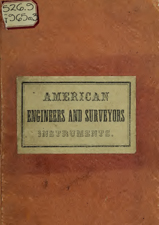
Gurley - The Big Kahuna. Dominated the marketplace, especially for solar instruments:
Dating Gurley Instruments
Gurley unfortunately did not use serial numbers until 1908 or so. This makes dating Gurley instrument made before 1908 something of a challenge.
The best way to date Gurley instruments made before 1908 is to buy Brain Aregood's 2011 book "The Complete Guide to Early W. & L. E. Gurley Transits". This is a MUST-HAVE book if you want to collect Transits, especially Gurley Transits. Amazing detailed, and written in a way that even non-surveyors can easily follow the discussion. The book comes in two flavors at Amazon - Deluxe (color) for $80 and Standard (B&W) for $50. I opted for the Deluxe version - crisper illustrations. No regrets. Many of the same date techniques Aregood used for transits applies to other Gurley instruments as well. The book also contains a pretty good description of the different labels that Gurley used.
Dating a Gurley made in 1908 or thereafter is pretty easy using the serial number Gurley used. If the serial number starts with an 8 or a 9, the instrument was made in 1908 or 1909, respectively. If the first number isn't an 8 or a 9, you look at the first two digits, which tell you the year the instrument was made. The serial number 23xxxx was made in 1923, and was the xxxx instrument made that year.
Labels

Label Inside Case for 1854 Gurley Engineer's Transit
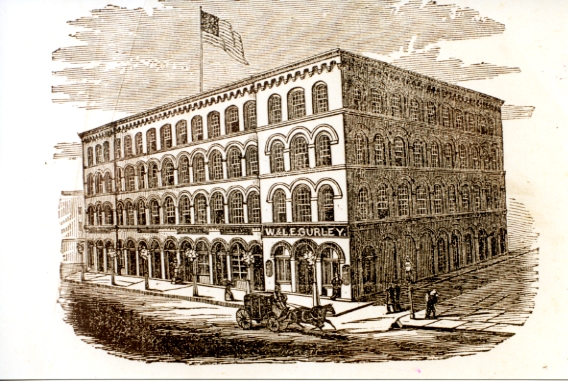
Gurley Manuals 1872 & 1873
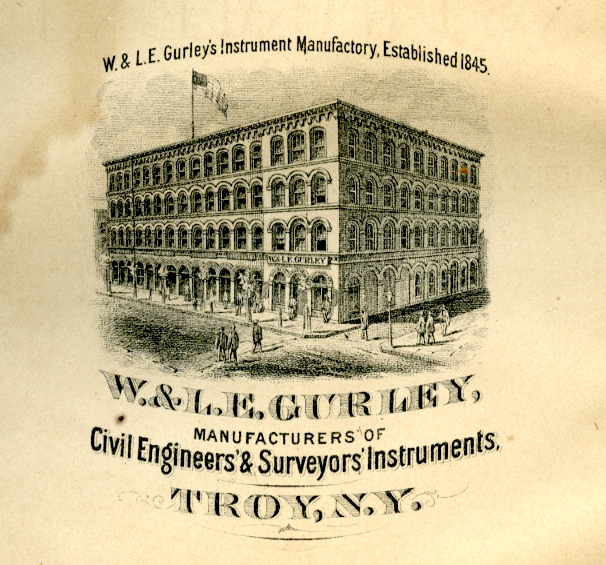
Gurley Manuals 1874 to 1878
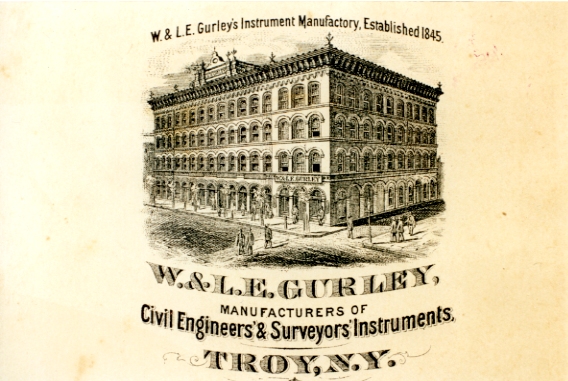
Gurley Manual 1883
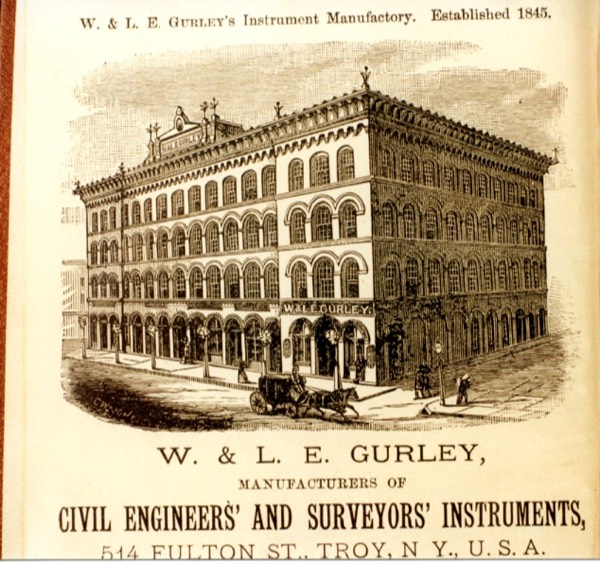
Gurley Manuals 1887 to 1893

Gurley Manuals 1895 to 1909
Gurley's Instrument Production 1855 Thru 1860
Mobile Device Users - You Must Open This Multi Page PDF By Clicking Here
Gurley's Instrument Production - 1857
Gurley's Instrument Production 1870 Thru 1885
Article #1
Article #2
Compleat Surveyor Instruments

Extremely Rare Aluminum Gurley Solar Compass
360 Degree Spinner View - with Scope
Circa 1893 - Known Washington History
SOLD
Email Russ
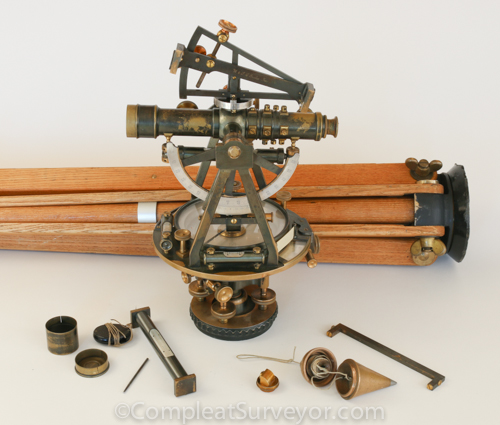
Circa 1907 Gurley Light Mountain Solar Transit
360 Degree Spinner View
Fantastic Condition & Many Accessories
SOLD - Email Russ
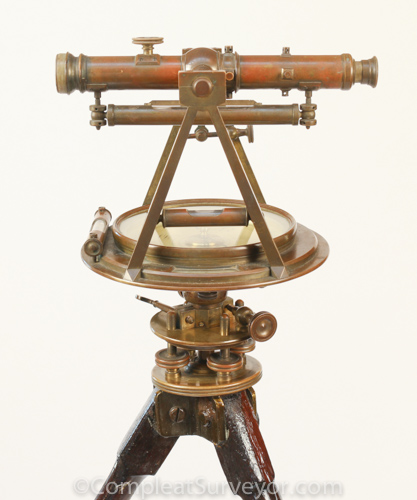
Circa 1859 Gurley Surveyor's Transit
360 Degree Spinner View
Rare Early Design - See Description
SOLD
Email Russ
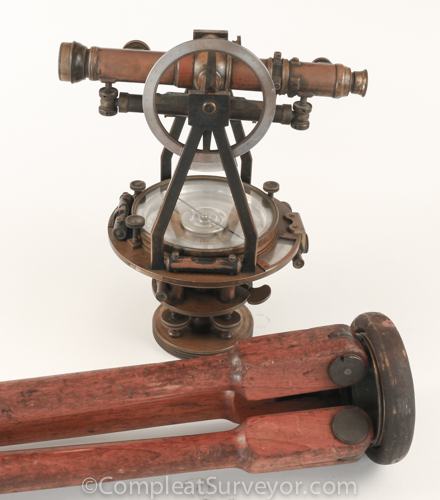
Circa 1896 Gurley Surveyor's Transit
Nice Transit, Tripod & Box
SOLD - Email Russ
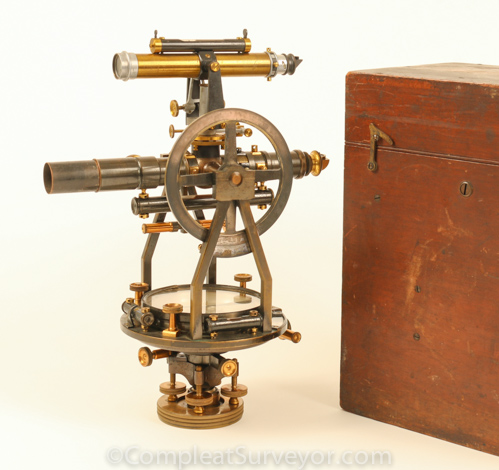
Circa 1903 Gurley Saegmueller Solar & Mining Transit
Wonderful Reconnoissance Transit
SOLD - Email Russ
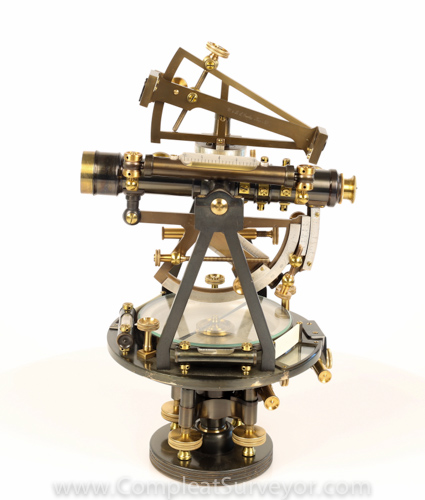
1913 Gurley Solar Transit with Jones Latitude Arc
360 Degree Spinner View
Restored - Spectacular - Rare
SOLD - Email Russ

1858 First Design Gurley
Only Known First Year of Manufacture Gurley Solar Compass with ORIGINAL Gurley Design Features
SOLD
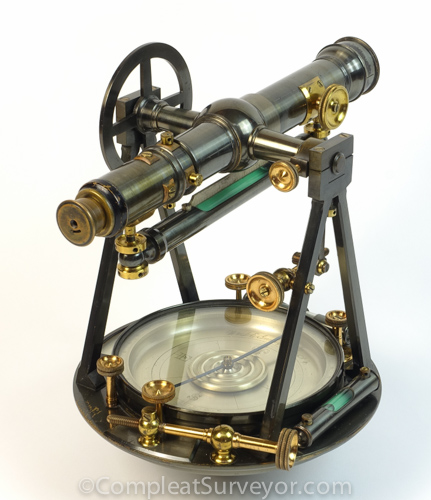
Museum Quality Circa 1880 Gurley Surveyors Transit
Stunning & Barely Used Gurley Transit - SOLD
Email Russ
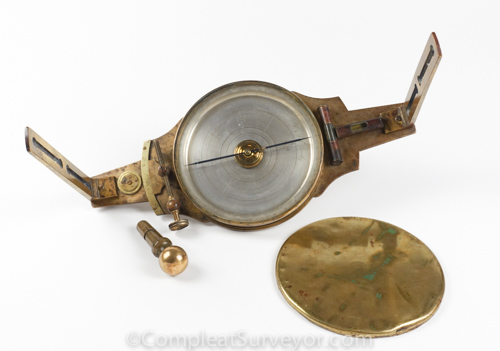
Circa 1875 Gurley Vernier Compass
No Box - One Level Empty
No Longer Offered for Sale
Email Russ
New Collectors Only

Circa 1905 Gurley Reconnoissance Mining Transit
360 Degree Spinner View
Wonderful Small Instrument - Refinished Tripod
SOLD - Email Russ
© 2020 Russ Uzes/Contact Me
